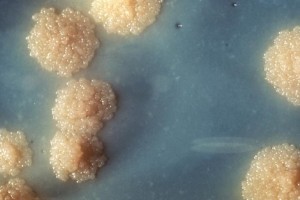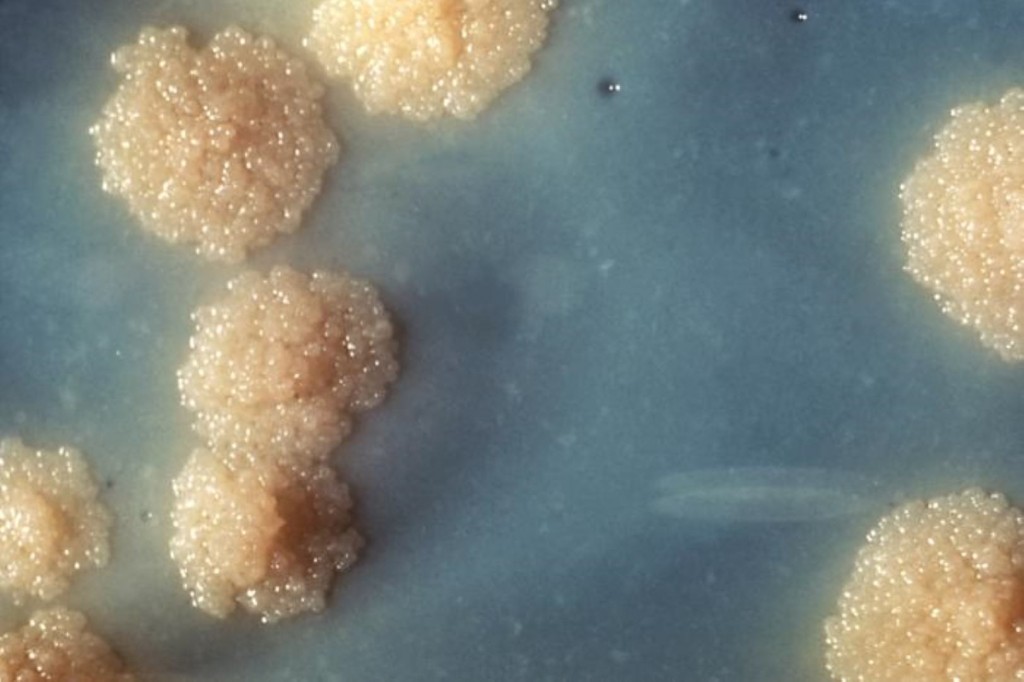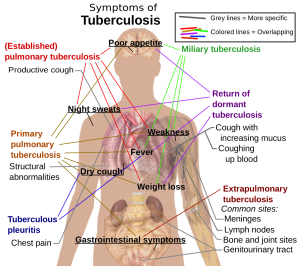Tuberculosis
Tuberculosis, often known simply as TB, is one of the most infamous bacterial killers of all time, made immortal in books and movies. The advent of antibiotics that can treat and cure TB lulled people, including those in the healthcare community, into a false sense of security, believing that TB was a thing of the past. This set the stage for a massive resurgence of TB in this country in the late twentieth century. Unfortunately, the new TB was widely resistant to most treatment drugs, but the worst of the outbreak was slowly brought under control. Tuberculosis remains a major killer in the world, killing over 1 million yearly and infecting at least one-third of the entire world population. TB is especially prevalent in developing nations, but it also remains an active disease in the United States as well, with almost 10,000 reported infections in 2013 alone. While tuberculosis infections are on the decline, it remains a disease worth preventing.
Symptoms of Tuberculosis Infection
The symptoms of tuberculosis vary depending on where the infection is active. Most of the time TB starts in the lungs, but it can also start in the stomach, most often from drinking unpasteurized cow milk, and it can activate just about anywhere in the body if it has spread from the initial infection site.
Symptoms of TB disease can include and of the following:
- a bad cough that lasts 3 weeks or longer
- pain in the chest
- coughing up blood or sputum
- weakness or fatigue
- weight loss
- no appetite
- chills
- fever
- sweating at night
Who Gets Tuberculosis?
Anyone who has close and usually prolonged contact with active TB disease could become infected. Many of those exposed, or even infected, may never become sick with TB, but some people are more at risk for developing active disease and illness than others. Those most at risk for active disease include, but are not necessarily limited to:
- Has HIV infection;
- Has been recently infected with TB bacteria (in the last 2 years);
- Has other health problems, like diabetes, that make it hard for the body to fight bacteria;
- Abuses alcohol or uses illegal drugs; or
- Was not treated correctly for TB infection in the past
How Is Tuberculosis Spread?
TB is usually spread through the air from one person to another. The TB bacteria are put into the air when a person with TB disease of the lungs or throat coughs, sneezes, speaks, or sings. People nearby may breathe in these bacteria and become infected. TB bacteria are very hardy and can persist in the environment for a long time without dying. The special cell structure of the bacteria, which includes fatty acids that are resistant to drying, acids, and therefore many disinfectants, make it possible for TB to remain infectious outside of the body. Contact with contaminated surfaces, therefore, could pose a risk of infection with TB.


